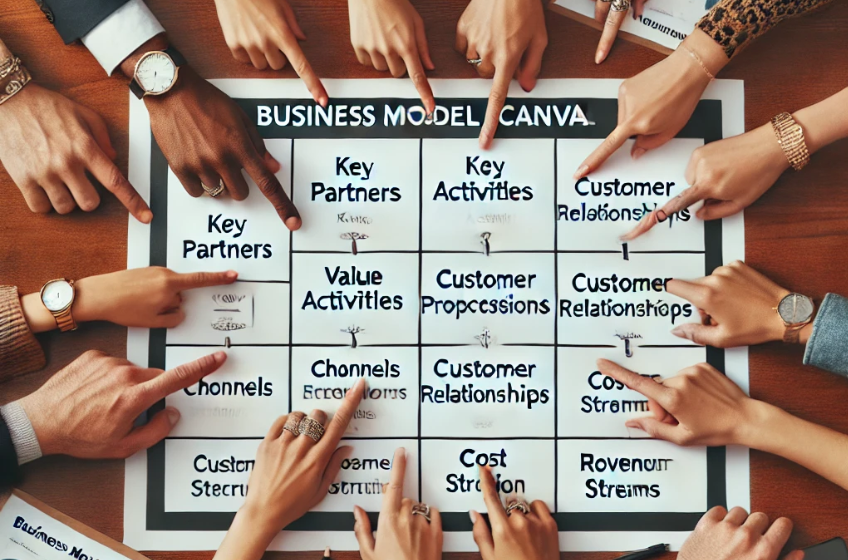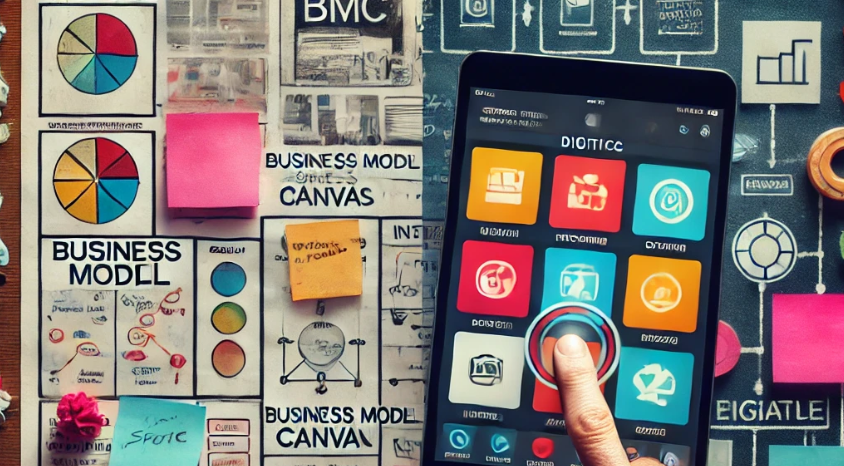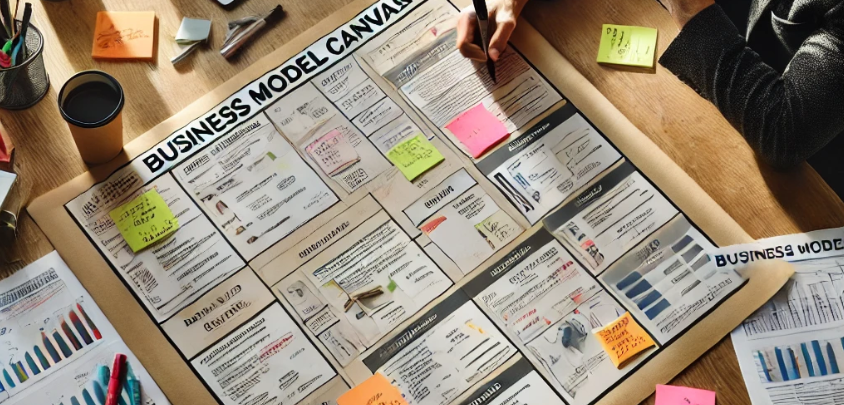In today’s fast-paced business world, entrepreneurs need efficient ways to plan, strategize, and communicate their ideas. Enter the Business Model Canvas (BMC), a visual framework that has revolutionized how companies conceptualize and develop their business models. This comprehensive guide will explore the BMC’s evolution, its modern applications, and how you can leverage it to drive your business forward.
Understanding the Business Model Canvas
The Business Model Canvas, developed by Alexander Osterwalder and Yves Pigneur, is a strategic management template used to document existing business models or develop new ones. It offers a holistic view of a business through nine key building blocks:
- Customer Segments
- Value Propositions
- Channels
- Customer Relationships
- Revenue Streams
- Key Resources
- Key Activities
- Key Partnerships
- Cost Structure
These elements work together to provide a comprehensive snapshot of how a company creates, delivers, and captures value.
Evolution of the Business Model Canvas
Since its introduction in 2008, the BMC has evolved to meet the changing needs of businesses in the digital age. Here are some key developments:
- Digital Integration: The rise of digital business models has led to adaptations of the BMC that emphasize online channels, digital customer relationships, and data-driven revenue streams.
- Sustainability Focus: With a growing emphasis on corporate social responsibility, many businesses now incorporate sustainability considerations into their BMCs, often adding layers for environmental and social impact.
- Lean Startup Integration: The BMC has been combined with Lean Startup methodologies, creating tools like the Lean Canvas that focus on problem-solving fit and key metrics.
- Industry-Specific Variations: Different sectors have developed tailored versions of the BMC. For example, the Mission Model Canvas adapts the framework for mission-driven organizations.
Modern Applications of the Business Model Canvas
The versatility of the BMC has led to its adoption across various industries and business types:
Tech Startups: Companies like Dropbox and Airbnb have used the BMC to refine their value propositions and identify key partnerships crucial for scaling.
Healthcare: Medical technology firms use the BMC to align their innovations with market needs and navigate complex regulatory environments.
E-commerce: Online retailers leverage the BMC to optimize their customer segments, channels, and revenue streams in the competitive digital marketplace.
Social Enterprises: Non-profits and social businesses use adapted versions of the BMC to balance mission impact with financial sustainability.
Step-by-Step Guide to Creating Your Business Model Canvas
- Define Your Value Proposition Start by clearly articulating what problem you’re solving or what need you’re fulfilling for your customers. This is the heart of your business model.
- Identify Customer Segments Who are your most important customers? Be specific about their characteristics, needs, and behaviors.
- Establish Customer Relationships Determine how you’ll interact with your customers. Will it be through personal assistance, self-service, or automated services?
- Choose Your Channels Decide how you’ll reach and communicate with your customer segments. Consider both direct (e.g., sales force, web sales) and indirect (e.g., partner stores, wholesalers) channels.
- Outline Revenue Streams How will your business make money from each customer segment? Consider one-time transactions, recurring revenues, licensing fees, etc.
- Identify Key Resources What are the most important assets required to make your business model work? These could be physical, financial, intellectual, or human resources.
- Define Key Activities What are the most important things your company must do to make its business model work? This could include production, problem-solving, or platform maintenance.
- Determine Key Partnerships Who are your key partners and suppliers? What motivates these partnerships?
- Analyze Cost Structure What are the most important costs inherent in your business model? Are you more cost-driven or value-driven?
Best Practices and Tips for Using the BMC
- Use Visual Elements: Incorporate colors, icons, and images to make your BMC more engaging and easier to understand.
- Collaborate: Involve team members from different departments to get diverse perspectives and create a more comprehensive model.
- Iterate: Your BMC should be a living document. Regularly revisit and update it as your business evolves.
- Start with Customers: Begin by focusing on your customer segments and value propositions before moving to other areas of the canvas.
- Be Specific: Avoid vague statements. Use concrete examples and data points wherever possible.
- Consider Multiple Scenarios: Create several versions of your BMC to explore different business model options.
- Use Digital Tools: While physical canvases have their place, digital BMC tools can offer more flexibility and easier collaboration.
Overcoming Common Challenges
- Overthinking: Don’t get bogged down in details. The BMC is meant to be a high-level overview.
- Lack of Customer Focus: Always keep your customer at the center of your thinking.
- Ignoring External Factors: Consider how market trends, regulations, and competition might impact your model.
- Static Thinking: Remember that your BMC should evolve as your business grows and changes.
- Neglecting Financials: While the BMC isn’t a detailed financial plan, ensure your revenue streams and cost structure are realistic.
The Future of the Business Model Canvas
As business landscapes continue to evolve, so too will the BMC. Here are some trends to watch:
- AI Integration: Artificial intelligence could help generate and test multiple business model scenarios quickly.
- Real-time Data: Integration with business intelligence tools could allow for dynamic, data-driven canvases.
- Virtual and Augmented Reality: These technologies could offer new ways to visualize and interact with BMCs.
- Blockchain and Decentralized Models: The BMC may need to adapt to represent new decentralized business structures.
Conclusion
The Business Model Canvas has proven to be an invaluable tool for entrepreneurs and established businesses alike. Its simplicity, flexibility, and holistic approach make it an essential part of modern business strategy. By mastering the BMC, you’ll be better equipped to navigate the complexities of today’s business world, identify new opportunities, and create sustainable value for your customers and stakeholders.
Remember, the true power of the BMC lies not just in its creation, but in its ongoing use and iteration. As your business grows and evolves, so too should your canvas. Embrace it as a living document, and let it guide your strategic decisions as you build and scale your business.
Whether you’re a startup founder, a corporate innovator, or a Pitch Deck Design Expert, the Business Model Canvas offers a common language and framework to articulate, test, and refine your business ideas. So grab your canvas, gather your team, and start mapping out your path to success.










